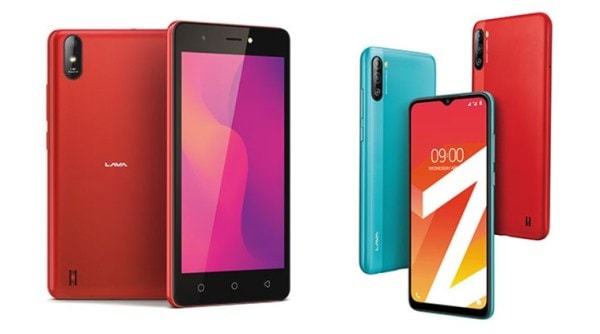Lava’s customisable and upgradeable phones could be a gamechanger
Lava is the latest Indian smartphone brand to mark its comeback in India with its new Z series of smartphones. But Lava is taking a slightly different approach. One, it is only focusing on the budget segment, and two it is offering customers the ability to customise and upgrade their device. The latter is truly unique in the smartphone segment.
Under its ‘My Z’ and ‘ZUp’ services, Lava is hoping to stand apart from the competition in the specifications driven Indian smartphone market. It also claims the phones are entirely made and designed in India.
Lava’s My Z and ZUp plans
Lava has launched two new services in the form of the brand’s My Z and ZUp plans. My Z lets users build their own Lava Z-series phone by choosing their own specifications like RAM, internal storage and even the camera setup, though there are fixed options in this mix.
This allows customers to pay extra for the specifications they want while not spending on elements which might not be as important for them. For instance, a user might choose to spend on extra RAM and storage and stick with a simple dual camera setup. Or they might want a triple camera at the back and a better selfie camera, without going for the highest RAM and storage.
The ZUp plan allows users of the Lava Z2, Z4, Z6 and My-Z phones to upgrade the RAM/internal storage of their phones within the first year of the purchase at a minimal cost.
Lava plans to allow users to choose their exact specifications in the areas they want, without paying more for other specifications that they do not need.
An eye on the budget market
The My Z and ZUp strategies are currently only aimed at the budget segment, and this is a smart move. “Since the pandemic started, you’ve seen the budget segment doing well. Until about the end of 2019, there were not too many players in the market. It’s not a very operationally profitable segment to do business for a brand like Xiaomi and Samsung,” Navkendar Singh from International Data Corporation, India (IDC India) told indianexpress.com over a call.
“In the last six to nine months what has happened is a slight cut down on the spends of the consumer. Plus E-learning initiatives have really taken the budget cycle by storm, because not everybody can afford a tablet or a laptop. So, people are buying second hand and low-end phones. This has led to the growth of the less-than-$100 or less-than-Rs 10,000 segment,” Singh added further.
The ‘Upgradeable device’ is not a new concept, but can it work?
Devices with upgradeable components have existed for a while, but primarily on the desktop front. These larger systems are often much more expensive to buy new, and replacing components like RAM or a graphic card are fundamental. However, dynamics change when it comes to smartphones, devices that are more personal, and harder to design in a modular format. Google infamously tried (and failed) to make the upgradeable, modular phone a reality with Project Ara.
Lava brings the upgradeable phone at a time when the market is flooded with competitors with multiple storage and RAM configurations of the same phone. However, it doesn’t throw a number of options in front of the customer. Instead, it offers more granular control so you focus only on one variant – the variant you want.
“You don’t need to produce so many variants at one go. This (also) gives a good idea of what consumers are looking for, rather than producing multiple preset storage variants, and putting all of them in the market,” Singh said.
There is also the question on how exactly the upgrade works given this is not so simple on a smartphone. When we asked Lava how they would allow for an upgrade of the RAM and storage, given these components are usually soldered onto the motherboard in a smartphone, the company said, “Taking advantage of our excellence in design and manufacturing capabilities, we have put separate individual components for SOC, RAM & ROM. So, RAM & ROM can be physically replaced by our highly trained engineers. Also, a lot of innovations are done in software to bring in this flexibility with best performance.”
While it might sound easy, this has not been attempted before by smartphone makers and goes against how SOCs are designed.
via:indianexpress

 The Lava My Z plan allows users to build a phone with their own configurations, while the ZUp plan lets them upgrade their phones. (Image Source: Lava)
The Lava My Z plan allows users to build a phone with their own configurations, while the ZUp plan lets them upgrade their phones. (Image Source: Lava) The Lava Z1 features a 5-inch display, MediaTek Helio A20 chipset 2GB/16GB configuration. Meanwhile, the Lava Z2 features a 6.5-inch screen, Helio G35 and 5,000mAh battery. (Image Source: Lava)
The Lava Z1 features a 5-inch display, MediaTek Helio A20 chipset 2GB/16GB configuration. Meanwhile, the Lava Z2 features a 6.5-inch screen, Helio G35 and 5,000mAh battery. (Image Source: Lava)


Comments
Post a Comment